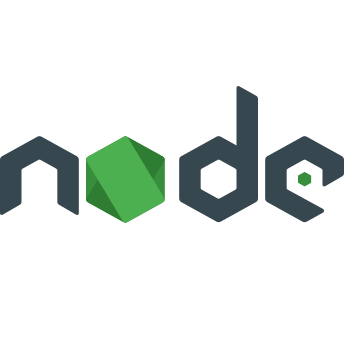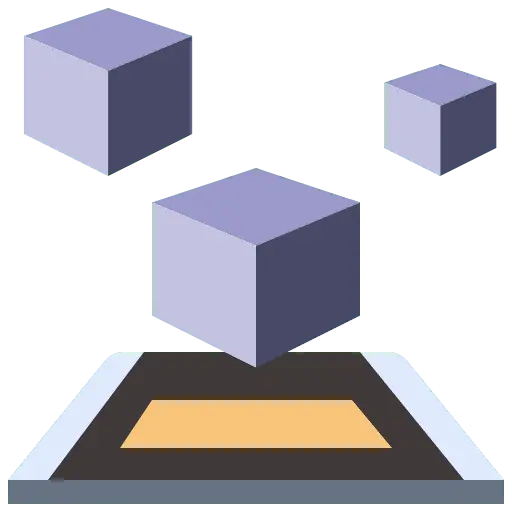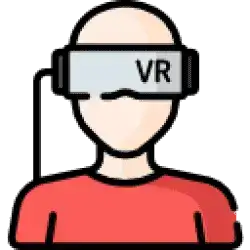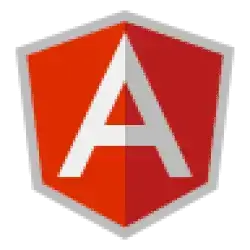virtual reality (VR), the use of modelling and simulation that enables a person to interact with an artificial three-dimensional (3-D) visual or other sensory environment. VR applications immerse the user in a computer-generated environment that simulates reality through the use of interactive devices, which send and receive information and are worn as goggles, headsets, gloves, or body suits. In a typical VR format, a user wearing a helmet with a stereoscopic screen views animated images of a simulated environment. The illusion of “being there” (telepresence) is affected by motion sensors that pick up the user’s movements and adjust the view on the screen accordingly, usually in real time (the instant the user’s movement takes place). Thus, a user can tour a simulated suite of rooms, experiencing changing viewpoints and perspectives that are convincingly related to his own head turnings and steps. Wearing data gloves equipped with force-feedback devices that provide the sensation of touch, the user can even pick up and manipulate objects that he sees in the virtual environment.
The term virtual reality was coined in 1987 by Jaron Lanier, whose research and engineering contributed a number of products to the nascent VR industry. A common thread linking early VR research and technology development in the United States was the role of the federal government, particularly the Department of Défense, the National Science Foundation, and the National Aeronautics and Space Administration (NASA). Projects funded by these agencies and pursued at university-based research laboratories yielded an extensive pool of talented personnel in fields such as computer graphics, simulation, and networked environments and established links between academic, military, and commercial work. The history of this technological development, and the social context in which it took place, is the subject of this article.
If you are game lover, then you need to pull out your concept to let you drive to your fantasy. If you hold up a team of fanciful employees working on game development with you, then keep aside an afternoon to brainstorm with them to bring your game conception to existence. Make a note that free-associating means exploring all up approaches - the sky is the limit. As far as the game concept is feasible in virtual reality then it is acceptable.
If you have a capable developer like QueryFinders Solutions where your dream beginning of the virtual game a reality? This is the intelligible later step because all ideas need to have practical application in the game app universe. You have to be seated with the virtual game developers team explaining your entire storyboard to them if they can turn the concept into virtuality in form of game development. Choosing developer at QueryFinders Solutions can integrate your obscures idea and incorporate them into the game of virtual world where you will be lost in the creation of virtually developed around you.
Industries where Virtual Reality is being used.
1. Healthcare
The most important way VR is modernizing healthcare is through training. VR facilitates an environment to learn and grow outside in real-world situations.
With VR, specialists who need to perform very precise operations can practice without being in the midst of an emergency.
And practitioners who need to get familiar with the hospital environment can do so without the extra stress involved.
The technology is also being used in cognitive behavior therapy where patients with phobias and anxieties work through their problems in a controlled environment.
2. Entertainment
The entertainment industry was one of the first to incorporate VR and still remains one of the strongest examples of how it can be applied. If you look at online and/or console gaming, you will see that VR has a strong presence in this industry.
Similarly, VR is being introduced to cinemas and theme parks to simulate movie-like adventures and let people experience their favorite cinematographic masterpieces.
3. Automotive
VR helps car manufacturers in analyzing road scenarios and the behavior of cars. The simulated situations allow them to analyze and make changes to the prototypes before developing a new model.
Virtual reality is widely used in the development of smart cars that will flood the market in the future. Cars learn how to drive, turn, and stop using artificial intelligence (AR) and virtual reality.
4. Education
Even though education is believed to be a rather slow industry to pick up new trends and technologies, VR has already shown a lot of promise.
For adults, it means that any industry can provide professional training to their employees. But for younger students, VR is part of educational games, field trips, and in general experiencing the world.
5. Space & Military
Given that these two industries have to operate in rather dangerous environments that can’t be easily accessed, VR provides conditions for making things as close to reality as possible for training.
VR enables trainees to go through preparation with minimal risks and even helps soldiers suffering from battlefield trauma to overcome these conditions and prepare for new or unexpected situations.
6. Architecture
Using VR, architects can not only envision what they’re building but understand how it feels as well. This allows them to experience the space before it is built and make real-time changes to deliver customer satisfaction.
7. Digital Marketing
While most people don’t like commercials, experiencing the use of a product close-up can actually be an entertaining and enlightening experience. There are a variety of applications of VR in digital marketing.
For example, retailers can show potential customers how a product will look in their home. Or nonprofits can create more empathetic messaging for political issues.
8. Occupational Safety
Occupational safety and health (OSH) is a concern for workplaces with machinery or natural hazards.
These workplace dangers can be addressed in a simulated environment so workers can learn how to respond to them effectively without being hurt.
9. Social Science and Psychology
Much of this industry relies on VR so that a patient can embody someone else and imagine reality from a different perspective or worldview. Immersive environments can leave positive impacts on future social interactions.
10. Tourism
Try a holiday before you buy it. No, seriously. One pointed virtual reality application is tourism.
You can go on guided virtual tours of hotels, landmarks, restaurants, and whatever else you may want to visit on your next vacation. And then when you do go, you know you won't be disappointed.
What Programming Languages Are Used for Virtual Reality?
When it comes to the intersection of software and hardware that’s involved in making technology like VR, not all programming languages will suffice.
There are only a few specific languages that can get the job done.
What Programming Languages are being Used with virtual Reality
C# is a general-purpose, multi-paradigm language. Its most popular usage is as part of the Microsoft .NET framework which has various development tools. This includes the cross-platform mobile development framework called Xamarin and the game engine Unity.
Unity is especially important for building virtual reality applications as it is a platform for real-time 2D and 3D game development. Of course, extending this use case to VR games would not be a problem.
C++ is an extension of C, a popular middle-level programming language. Middle-level languages, including C++ naturally, have the benefit of low-level memory manipulation making them more viable to work closely with hardware.
For that same reason, the language is used in yet another game engine, Unreal Engine. Unreal Engine markets itself as being the “world’s most open and advanced real-time 3D creation tool…[delivering] immersive virtual worlds.”
Java is a general-purpose, object-oriented programming language with a quarter of a century of years behind it.
The language’s low-level aspects – somewhat mirroring the memory management in languages like C# and C++ – and its large set of built-in libraries make Java a great language for building virtual reality environments.
JavaScript first gained its popularity by being one of the very first languages to allow for dynamic web development. Most web browsers rely on JavaScript, making the language suitable for WebXR Device API, a platform enabling VR through your browser.
Python first four languages are the prime picks for virtual reality development. But Python deserves an honorary mention. Python is pretty straightforward and will speed up development projects, especially those using VR.
The language also comes equipped with several packages that can aid in the building of virtual reality applications.
 info@queryfinder.com
info@queryfinder.com
 +91
8000841620
+91
8000841620
 +61 416 779 037
+61 416 779 037










